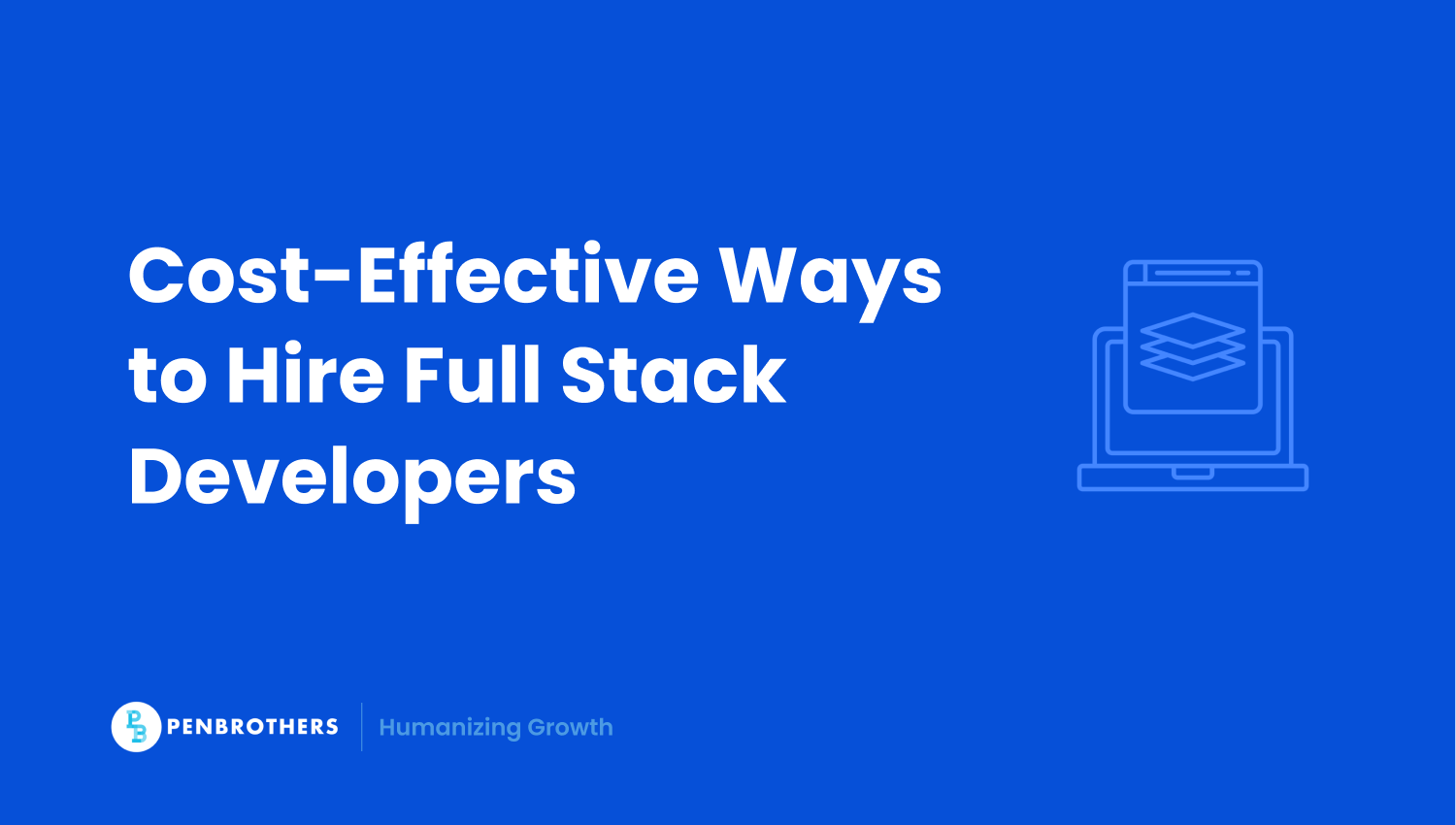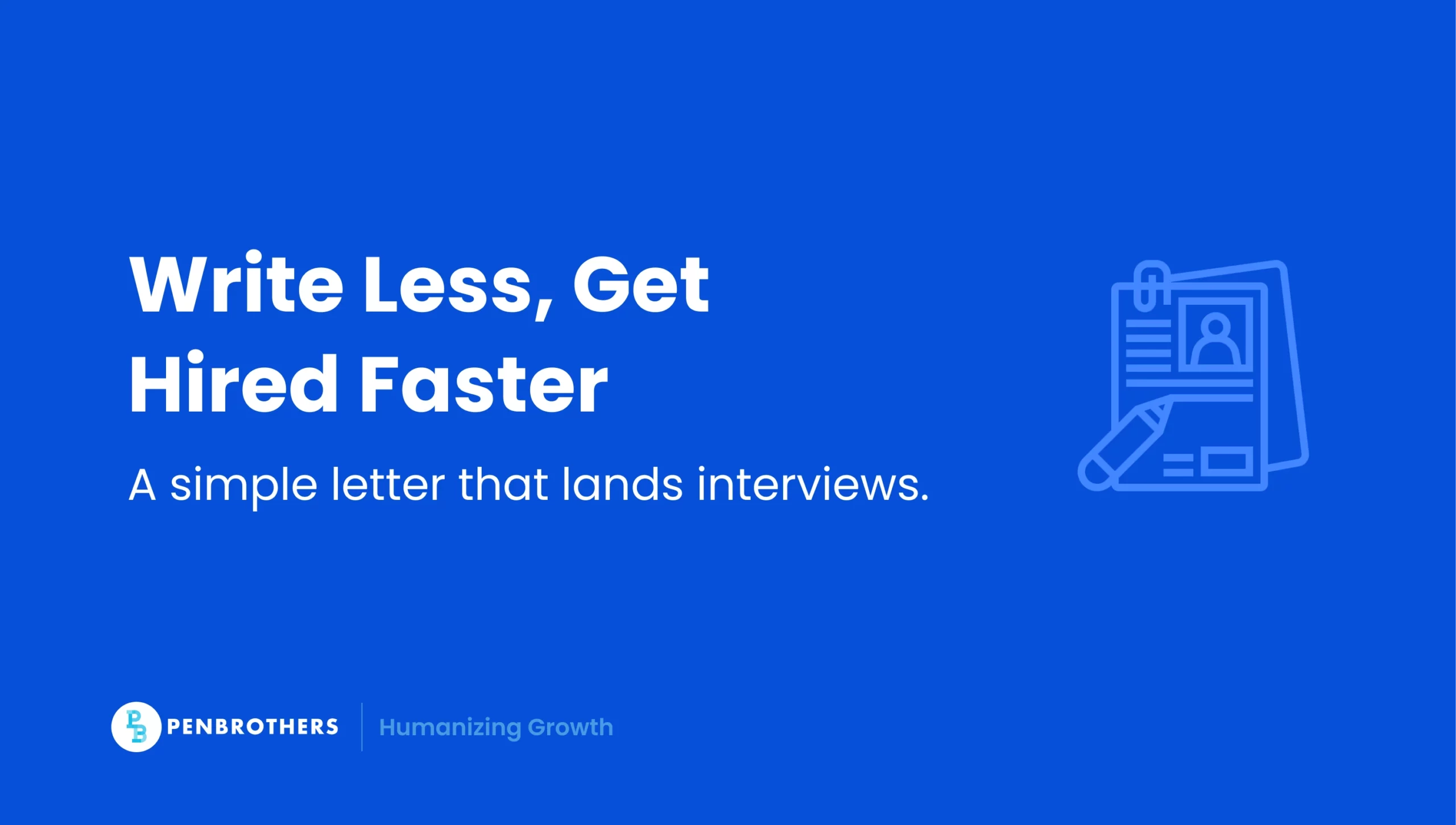What's Inside?
A Reliable Guide on Choosing Part-Time vs. Full-Time Workers

Labor shortage continues to be a problem for employers worldwide. If your company’s labor shortage persists, it can lead to poor efficiency and profitability. For small businesses, it can hamper their growth rate at a critical time.
Not only is it a problem for employers, but it’s a struggle for employees, too. Your current employees can have increased workloads and longer working hours.
If employers address this faster, it can prevent employee burnout. It will allow employers to maintain a stable workforce amidst potential shortages.
The most direct way to deal with this issue is by hiring more workers. When faced with this situation, employers often encounter another dilemma: should they offer a part-time or vs. full-time job?
If you’re an employer or hiring manager faced with this question, this guide can help. This guide discusses the part-time vs. full-time worker differences, their pros and cons, and when to choose strategically.
Key Takeaways
- A Strategic Choice Based on Specific Business Needs: The decision to hire part-time versus full-time employees is a strategic one that depends on a company’s immediate and long-term goals. Each model offers a distinct set of advantages and disadvantages.
- Part-Time Work Offers Flexibility and Cost-Effectiveness: Hiring part-time employees is the ideal solution for businesses that require flexible scheduling to manage seasonal or fluctuating demand. It is also a cost-effective way to add support without the high overhead of a full-time salary and a comprehensive benefits package.
- Full-Time Work Provides Stability and Deeper Integration: Hiring full-time employees is the better choice for achieving consistent workplace productivity, greater employee loyalty, and the stability necessary for long-term strategic project planning. It is often more efficient than hiring multiple part-timers to cover a consistent need.
- Key Differences Go Beyond Just the Hours Worked: The primary distinctions between the two employment arrangements extend beyond the number of hours worked. They also include significant differences in compensation and benefits eligibility, levels of job security, and the consistency and predictability of work schedules.
What Is a Part-Time Employee?
A part-time contract definition is when the employee’s work hours are fewer than a full-time worker. Different jurisdictions have their own rules on how many hours it takes for employees to count as part-time.
As an example, in Australia, full-time working hours are 38+ hours per week. This highlights the distinction between part-time vs. full-time in Australia.
On the other hand, the maximum number of part-time hours per week in Singapore is less than 35 hours. For both the US and the UK, a full-time employee usually works for 35+ hours.
Knowing the local regulations is key if you’re working with offshore employees. However, a knowledgeable offshore company should handle that on your behalf.
What Benefits Are Part-Time Employees Entitled To?
Employee benefits are one of the recurring costs companies have in human resources.
Usually, part-time employees don’t have complete employment benefits like full-time workers do. However, local labor laws may indicate which benefits are mandated for both part-time and full-time employees.
For example, if you’re hiring offshore employees from the Philippines, they have legally mandated benefits applicable for both part-time and full-time employees. These are:
- Public health insurance
- Government pension plan
- Housing loans and savings plans
- 13th Month Pay
- Paid leaves
It’s best to reference the local regulations. That way, you can accurately understand what are mandatory employee benefits for part-time workers.
See Also: Planning to build an offshore team in the Philippines? Here are other non-negotiables to consider outside of employee benefits.
Are Part-Time Employees Exempt or Non-Exempt Employees?
For US employers, part-time employees can be exempted regardless of working hours. Here are the three requirements according to the US Fair Labor Standards Act:
- Is the employee paid a fixed amount each week?
- Are they paid at least $684 per week?
- Are their jobs those of an administrative, professional, or executive employee?
If the answer is yes to all three, then they are exempt. The most significant implication is that they won’t be eligible for overtime pay.
What Is a Full-Time Employee?
The legal full-time employment definition differs per jurisdiction. In general, though, it is a worker who works the minimum working hours indicated by the company. Those minimum working hours differ per company or country.
For example, there should be no differences in the treatment of part-time vs full-time UK workers in their labor laws. However, the full-time working hours usually are 35+ hours per week.
Can a full-time employee work part-time, too?
Usually, there are no laws disallowing full-time employees from taking on part-time work. However, there may be stipulations in employee contracts regarding this situation.
For any full-time employees planning to take part-time jobs, talking to their employer is necessary. That ensures that they’re not breaking any contracts when they take on part-time work.
What is the Difference Between Full-Time vs. Part-Time Employees?
Let’s discuss the differences between full-time and part-time employees. That way, you can accurately estimate which employment arrangement fits your current business needs.
Working Hours
The main difference between a part-time and full-time worker is their working hours.
Various jurisdictions have diverse regulations on what hours count as full-time. However, the rule is usually the same: the max hours for part-time workers don’t exceed that of full-time employee hours.
Employee Benefits and Compensation
The compensation for part-time employees is usually lower than those of a full-time employee. That’s because of the fewer working hours and employee benefits of a part-time worker.
There are legally mandated employee benefits that apply to both full-time and part-time workers. Most of the time, full-time employees enjoy the whole breadth of benefits employers provide, including fringe benefits.
Job Security
Full-time employees retain employment status regardless of the ebb and flow of work demands. However, part-time employees don’t have that same job security.
One of the main reasons companies hire part-time employees is because of seasonal demand. They would then add a duration in the employment contract detailing how long a part-time worker will stay with them. They may decide after that period whether they still need the part-time employee or not.
Work Schedules
Aside from variations in part-time vs full-time hours, the work schedules are also a main point of difference.
Full-time workers usually have a consistent schedule every week. It rarely, if ever, changes. Most of the time, it’s a straight eight-hour shift.
On the other hand, part-time workers often operate on a shifting schedule. Their schedule can change each time depending on the needs of the company.
Table 1: Four Main Differences Between Part-Time and Full-Time Workers
| 4 Main Differences Between Part-Time and Full-Time Workers | ||
| Factors | Part-Time Workers | Full-Time Workers |
| Working Hours | Less than the working hours of full-time workers | Depends on company rules and local labor laws |
| Employee Benefits and Compensation | Lower compensation than full-time workers | More compensation due to more working hours |
| Fewer benefits than full-time workers | Eligible for all benefits that employers provide, including fringe benefits | |
| Job Security | Depends on demand from employer and employee contract | Less susceptible to job loss |
| Work Schedules | Based on shifts; Can change depending on company needs | Consistent work schedules; Usually a straight eight-hour period |
Knowing these differences helps effectively manage work schedules, benefits eligibility, and overall workforce planning. Thus, you can remain compliant with labor laws.
Advantages of Hiring Part-Time Employees
To understand whether you need a part-time employee, knowing their strengths is key. So, let’s cover what advantages employers gain if they hire part-timers. That way, you can make an informed decision before you start the candidate search.
Flexible Scheduling
There are some tasks you need to do in your business that require unconventional working hours. In this case, hiring a part-time worker can be a stopgap.
For example, you might only need additional workers during the holidays. Instead of committing to a full-time employee, a part-time worker can fulfill these tasks. You can then safely end your working relationship after seasonal demand has waned.
Cost-Effective Talent Solution
Small business owners in growth phase find themselves overwhelmed with work. However, hiring a full-time employee might either be:
- too costly, or
- not a priority because demand isn’t that high just yet.
In this case, part-time employees are a great cost-effective solution to a need for labor.
Even if you’re not a startup, offering a part-time vs. full-time job is more cost-efficient. That’s because you don’t have to spend money on employee benefits. Plus, the salary of a part-time worker is lower, too.
Access to More Talent
Some highly skilled workers aren’t available for full-time work. It could be because they’re already a full-time employee or prefer part-time work.
If your business still needs these highly specialized workers, engaging them part-time is a way to do that. You’ll find it easier to access specialized experts that you wouldn’t have been able to reach out to before.
More Support for Full-Time Employees
Full-time employees directly feel the impact of a labor shortage in the company. That’s why when you hire a part-time employee, they can support your full-time employees.
When To Apply This: If you want to hire part-time employees to support full-time workers, the best time to do that is:
- When multiple employees are on leave simultaneously
- During peak seasons
- When you need extra hands during unconventional times (events, pop-up booths, etc.)
These are the strategic examples of when to hire part-time employees to support full-time workers.
Disadvantages of Hiring Part-Time Employees
Employers planning to hire part-time workers should look at potential challenges. Understanding these helps companies mitigate any issues. Knowing the cons can also help employers effectively address business needs with part-time staff.
Lower Employee Engagement
Part-time employees have fewer obligations to your company. Aside from that, they don’t spend as much time in your company. That’s especially true if you hire them on a seasonal basis. Therefore, part-time employees can be less engaged than full-time employees with your company.
Tip to Manage This Challenge: Adjusting communication styles and avoiding micromanaging are a few ways to increase employee engagement.
Logistical Challenges
The more workers there are, the more complexities there are in scheduling.
You have to ensure that some shifts aren’t less staffed than others. At the same time, you have to project which times have increased workload. That way, you can hire part-time workers at the right time.
Tip to Manage This Challenge: Scheduling challenges require you to rely on your managerial team. Offering them scheduling tools and software can help them in project and schedule management.
Work Quality Inconsistencies
When it comes to part-time vs. full-time job work quality, it’s easier to stay consistent with full-time workers. This is especially true if you don’t work with the same part-time employees.
Unlike full-time workers, part-time employees have fewer chances to develop expertise or upskill. Therefore, it’s harder to keep work quality consistent. Not to mention that you have to constantly onboard new part-time employees.
Tip to Manage This Challenge: A streamlined onboarding process reduces the time and effort in onboarding new part-timers. Also, having a pool of part-time employees that you rely on can reduce the need for retraining.
Part-time employees are great for addressing fluctuating business demands. However, long-term projects and consistency are challenges that hiring part-time employees often brings.
When Should You Hire Part-Time Employees?
Part-time work is popular as it accommodates those unable to commit full-time, such as students and parents. Employers can retain skilled employees in these categories by offering part-time roles instead of losing their valuable expertise.
Did You Know: The Netherlands had a 38.70% part-time employment rate in December 2023.
Another situation where hiring part-time employees is better is if you’re working with lean resources. Part-time employees boost operational efficiency without egregiously increasing your labor expenses.
If you find your business in these situations, that’s a sign it’s time to hire part-time employees.
Advantages of Hiring Full-Time Employees
Part-time workers have their place in any modern workforce. However, full-time employees have benefits that are valuable to employers, too.
Here are the benefits of having full-time employees. Explore them to determine if a full-time employee is the better solution for your labor needs.
Consistent Workplace Productivity
Full-time employees don’t have to onboard or retrain constantly. You don’t have to update them on work operations either.
Their consistent work schedule ensures that their work has reduced disruptions. At the same time, it becomes easier for them to accomplish strategic tasks that are harder to assign to part-time workers.
These are why full-time employees lead to steady workplace operations. Thus, your company is more productive regularly.
Reduced Expenses Spent on Part-Time Employees
If you find yourself regularly offering more part-time vs. full-time jobs, reconsider. It’s a sign that you need someone to manage these tasks regularly. A full-time employee is the more efficient solution in this case.
An increasingly economical approach would be to work with highly skilled offshore employees. Use an offshore worker’s salary calculator to determine the cost savings you can gain from working with them.
Better Employee Loyalty
Better employee loyalty reinforces the long-term value of your workforce.
Hiring full-time employees is the start of your business developing a work culture. Unlike part-time workers, full-time employees have more attachment to your company. Thus, they’re more loyal to it.
According to Nicolas Bivero, CEO and Founder of Penbrothers, this approach, especially with offshore teams, enforces business stability and continuity.
“High retention rates within offshore teams provide business stability and continuity, while outsourcing risks high turnover rates, leading to operational disruptions and lower productivity,” he mentions.
Investing in employee retention is a long-term growth strategy. When you have long-term procedures, you reinforce your organization’s resilience. Long-term strategies also ensure that you stay competitive in your industry.
Better Project Planning and Management
The stability of full-time employees leads to better project planning and management overall.
For your company to grow, you need to accomplish long-term projects. You will need employees who regularly act on these long-term goals. Your part-time workers will most likely be challenged with this. That’s where you can best utilize full-time employees.
Disadvantages of Hiring Full-Time Employees
Let’s explore the drawbacks of exclusively hiring full-time employees. That way, you can proactively strategize and avoid common pitfalls associated with that.
More Costs on Employee Payroll and Benefits
Full-time employees work more hours. Aside from that, they are usually more entitled to employee benefits compared to a part-time employee. That means that it will cost businesses more to hire full-time.
Tip for Managing This Challenge: Hiring offshore employees is a great alternative for cost-efficiently building a global team.
More Risks of Employee Burnout
The longer working hours that translate to a heavier workload put a lot of pressure. Being under this consistent pressure can cause stress. Thus, it can lead to higher risks of employee burnout.
Tip for Managing This Challenge: Repetitive tasks can be discouraging for highly skilled employees. Providing your employees with tools like AI can improve their efficiency by reducing these tasks.
Aside from efficiency, Latesha Byrd, CEO of Perfeqta and Executive Coach, mentions the importance of a culture of well-being. This approach addresses the work culture aspect of burnout.
By developing a culture of well-being from the start, you’ll have built-in morale-boosting measures. This mindset works best for preventing employee burnout.
Possibility of Overstaffing
There are times when the workload inevitably spikes. That doesn’t necessarily mean you should immediately hire a full-time employee.
Overstaffing with full-time employees can reduce cost efficiency and create uneven workloads. Shortening periods of overstaffing can maintain workforce morale and stability.
Tip for Managing This Challenge: Conduct a thorough workforce analysis before initiating recruitment. That report will let you know if you have enough unaddressed workload that justifies the need for a new full-time employee.
Knowing the pros and cons of offering a part-time vs. a full-time job is important. That way, you can make more informed decisions for your talent acquisition strategies.
When is the Best Time to Hire Full-Time Employees?
Some signs indicate your business needs to hire a new full-time employee.
One example is if you hire more than two part-time employees to address a similar group of tasks.
Some tough-to-fill roles benefit from a job-sharing arrangement between two part-timers. However, if you’re scheduling more than two part-timers for that role, it’s time to pivot.
If you need specific expertise regularly, that’s a sign you need a full-time worker. Should skilled candidates be unavailable in your local market, hiring a full-time offshore employee is a great choice.
Another situation where offshore full-time workers are more warranted is for startup owners. Full-time offshore workers will manage your business’s regular operations. You’ll then be free to focus on growth strategies.
These are the most common signs that you should hire full-time employees for your labor shortage.
Related: Looking for other solutions for staff shortages? Weigh the pros and cons of freelancers vs. outsourcing vs. offshore employees in this guide.
Address Worker Shortages By Partnering With A Dependable Offshore Company
Prolonged worker shortages overburden your work operations. When you have an overwhelmed workforce, your business’s products and services may suffer in quality. Thus, it can lead to disgruntled customers. Offering a part-time vs. a full-time job can address this shortage.
However, offering jobs doesn’t necessarily mean you’ll find a qualified employee. The competitive job market makes it challenging to find highly skilled employees in your locality.
In this case, working with an offshore company is a viable solution. An established offshore company facilitates the recruitment of highly skilled offshore employees for you. That way, you can revitalize your company’s workforce quickly.
Are you a startup owner or a hiring manager dealing with a labor shortage? Rejuvenate your operations with offshore service providers while saving 79% in labor costs and 6x your workforce.
Frequently Asked Questions
The main difference is the number of working hours. A part-time employee works fewer hours than what is considered a full-time schedule by the company or local law. This fundamental difference also leads to variations in compensation, benefits eligibility, job security, and schedule consistency.
It is generally better to hire a part-time employee when your business has flexible or seasonal needs, when you are operating on a lean budget, or when you need to bring in specialized skills for a limited number of hours per week. They are also ideal for providing temporary support to full-time staff during peak periods.
You should hire a full-time employee when you have a consistent and ongoing need for a particular role that you find yourself repeatedly filling with multiple part-timers. A full-time employee provides greater stability and loyalty and is better suited for long-term, strategic projects.
Typically, no. While full-time employees usually receive a company’s complete benefits package, part-time employees often receive fewer or no discretionary benefits. However, in some jurisdictions, such as the Philippines, part-time employees are still legally entitled to certain mandated statutory benefits, like public health insurance and 13th-month pay.
The biggest disadvantages are the potential for lower employee engagement and loyalty to the company, increased logistical and scheduling challenges for managers, and the risk of work quality inconsistencies due to less training and integration compared to full-time staff.




